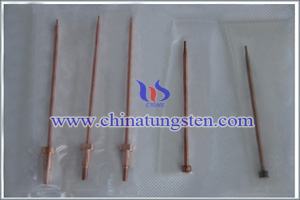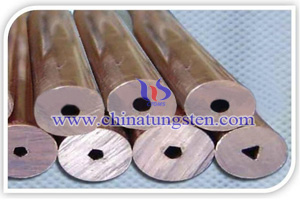Tungsten Copper FGM Thermal Conductivity
Introduction
Tungsten copper FGM thermal shock resistance is also called as thermal stability, thermal shock stability or resistance to temperature abruptness. It is an important indicator for evaluating the resistance of damage when it endures rapid temperature change. The closer the test values are, the higher the precision is.
Influencing Factors
The main influencing factors of tungsten copper FGM thermal shock resistance include CTE (Coefficient of Thermal Expansion), thermal conductivity, elastic modulus, material inherent strength, fracture toughness. Generally, the smaller CTE, the less the volume change caused by the temperature change, the less the corresponding temperature stress, the better the thermal shock resistance; the higher the inherent strength of the material, the greater the strength to withstand thermal stress without damage, thermal shock resistance is better; the larger the elastic modulus, the smaller the elasticity, the smaller the elastic deformation of the material can not alleviate and release thermal stress, which is not good for thermal shock resistance.
Test
1. Straight brick water quenching method in China (YB376). (200 to 230 mm) X (100 to 150 m) K (50 to 100 mm) was inserted into a furnace preheated to 1100 ° C for 50 minutes and then quenched in water at room temperature for 3 minutes and then dried. The thermal shock resistance was characterized by the number of thermal cycles in which the end face was broken by half; 2. Long strip test method in China (YB4018). The sample (230mm x 114mm x 31mm or 230 mm x 65mm x 31mm) to a surface as the heating surface, in the hot plate from the room temperature to a prescribed rate heated to 1000 ℃, for 30min, and then quenched in the air. The degree of damage was evaluated by the percent change of flexural strength before and after thermal shock. The bending strength retention ratio of each brick is calculated by the following formula: Rr = Ra / Rb × 100%, Rr - Retention strength (%), Ra-bending strength (MPa) Fracture strength of specimens before thermal shock. In addition, there is United States panel test method (ASTMC38), long sample test method (ASTMCll00) and the European Refractory Manufacturers' Association's Cylindrical Sample Water Quenching (PRE / RS-1).


Any feedback or inquiry of Tungsten Copper Alloy Products please feel free to contact us:
Email: sales@chinatungsten.com
Tel.: +86 592 512 9696 ; +86 592 512 9595
